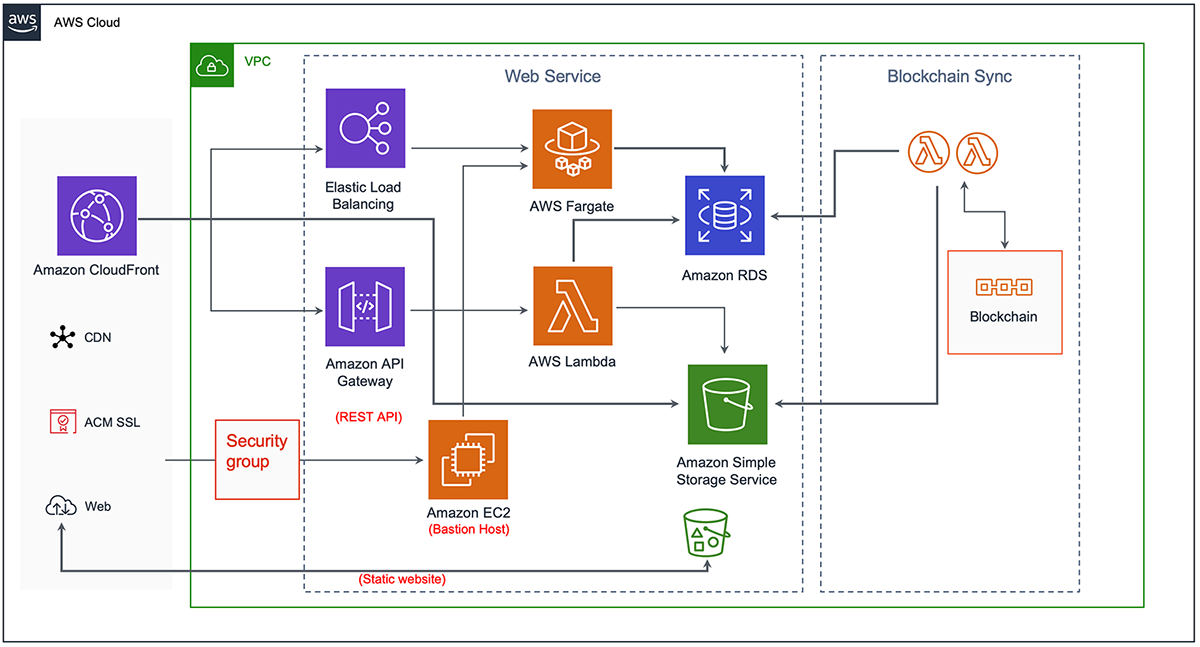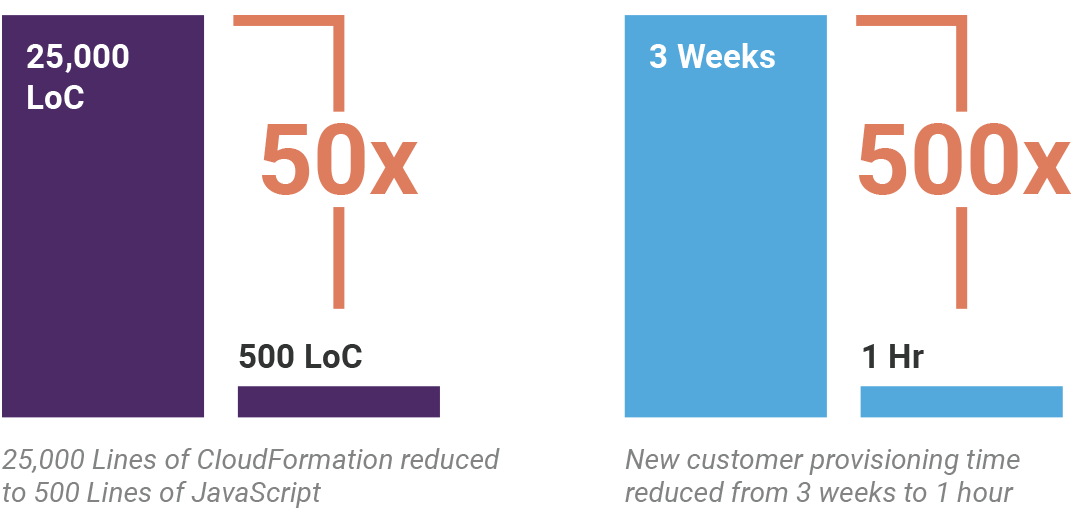“Jump in with both feet — the sooner the better. The payback is immediate and the confidence you gain from having a predictable development pipeline is immeasurable. Our industry moves with incredible speed and using tools like Pulumi are absolutely essential to providing teams with the agility that they require.”
Executive Summary
Learning Machine provides a secure platform, using the blockchain, to issue records in a format that is tamperproof, recipient owned, and independently verifiable. They are witnessing opportunities in several key industries — Public Sector, Healthcare and Education — and need to maximize their resources in order to quickly capitalize on the explosive growth opportunities in front of them. Pulumi offered them a solution which would both simplify existing cloud configurations and help Learning Machine to easily adopt AWS serverless technologies such as AWS Lambda and Amazon ECS and AWS Fargate. This enabled Learning Machine to expedite customer deployments and scale at lower cost.
About Learning Machine
Learning Machine partners with governments, companies, and school systems to deploy secure credentialing systems that leverage the blockchain as a secure anchor of trust. To ensure the longevity and interoperability of these records, they are leading contributors to standards communities, including Blockcerts, IMS Global, and the W3C.
Challenges Faced
Like many Software as a Service companies, Learning Machine started off with a basic infrastructure and a simple development process. They selected Amazon Web Services as their public cloud partner, and began using Cloud Formation to specify their infrastructure. Most of the development team was focused on higher-level business logic, and very quickly, the task of infrastructure specification became specialized. As a result, few folks on the development team had the time to jump in and understand the hundreds of lines of JSON and ad-hoc scripts used to get their SaaS up and running. The team was able to make progress for several months, before it was clear that there were some showstopper issues with their initial approach.
First, their configuration had become too complex. What had started as a few hundred lines of JSON quickly grew to thousands. At its peak, their CloudFormation templates grew to over 25,000 lines of code making updates time-consuming as few technical staff felt comfortable modifying configurations or deploying new applications. This was compounded by the fact that some configuration changes were happening in the AWS console, creating “drift” between the specification they thought they were running and the actual infrastructure that was provisioned in production.
Second, the company was growing. The CEO of Learning Machine, Chris Jagers, realized that much of their growth for the next few years would come from international clients, which would necessitate their core product being replicated in data centers across multiple geographies while keeping their SaaS costs under control. He huddled with his COO, Dan Hughes, and CTO, Kim Hamilton, to brainstorm about how to solve the dilemma they were facing.
Moving from Complicated to Simple
The team realized that in order to grow they needed to transition away from their first-generation tooling to an offering that more team members could understand and allowed more rapid customer deployments. They wanted their development team to be immediately productive, using their existing skill sets and they needed a solution that could be adopted incrementally, rather than shutting down with a full “lift and shift.” Fortunately, they were able to meet with the Pulumi team and describe the issues facing them and what they wanted to see in a next-generation solution.
Together Learning Machine and Pulumi worked to develop a solution. Learning Machine chose to standardize JavaScript and TypeScript as their primary programming languages. Once the team realized that they would be able to stamp out copies of their infrastructure on demand, they also decided to enhance their CI/CD pipeline to include infrastructure configuration alongside application code. This gave the engineering team the freedom to try new approaches, while maintaining engineering discipline with their core staging and production roll out processes.
As part of this new approach, Learning Machine began using Pulumi to incorporate Amazon Elastic Container Service (Amazon ECS) to run and scale their containerized applications, and AWS Fargate, a compute engine for Amazon ECS. This has enabled Learning Machine to run their containers without having to manage servers or clusters. As part of this new “serverless” strategy, Learning Machine also used Pulumi to incorporate AWS Lambda — removing additional complexity from their service architecture while making it easier to scale.

Results
The initial project took one month and transformed thousands of lines of templates into just a few hundred lines of code. Everyone on the team was able to clearly see the resources that their solution was using, why they were being used and who was responsible for their maintenance and configuration. Pulumi truly delivered a new way for the team to work.
By simplifying configuration with Pulumi, Amazon ECS, AWS Fargate and AWS Lambda, Learning Machine not only realized a 50x reduction in the amount of configuration that they had to manage but were also able to add new customers faster. Before the project, provisioning a new customer could take up to 3 weeks due to the complexity of configuration while their new approach reduced provisioning time to one hour.
The impact of serverless capabilities was also transformative for the Learning Machine business. Pulumi enabled a rapid shift to Amazon ECS, AWS Fargate and AWS Lambda — the net effect of which was a 67% reduction in AWS charges. This enabled the team to spend less time focused on maintaining existing infrastructure and more time deploying new applications on AWS and adding new customers.
“Pulumi is the foundational technology that allowed us to transform our organization,” said Hughes. The entire DevOps process was streamlined and in addition to realizing better productivity and higher quality, the team has new insight into their SaaS offering that they never thought possible.

New Opportunities
With the adoption of Pulumi, Learning Machine created new opportunities not just for the technical staff, but for the business as a whole. In addition to supporting new geographies for their public cloud, they now have the option to offer private cloud support as well: “Initially, we focused on cost and developer efficiency,” said Hughes, “Now, we realize that this is in fact a strategic choice, and that we can use this work to deliver the speed, flexibility, value and business outcomes that are so vital to our company.”
Hamilton offers this advice to her peers in key CTO roles. “Jump in with both feet — the sooner the better. The payback is immediate and the confidence you gain from having a predictable development pipeline is immeasurable. Our industry moves with incredible speed and using tools like Pulumi are absolutely essential to providing teams with the agility that they require.”
Pulumi Corporation
Pulumi's cloud engineering platform brings infrastructure, developer, and security teams together through a unified software engineering process that tames cloud complexity and accelerates innovation. Using the Pulumi platform, teams can build, deploy, and manage modern cloud applications faster and with more confidence, using any language, any architecture and any cloud. Pulumi lets teams build Universal Infrastructure as Code using popular programming languages (Python, JavaScript, TypeScript, Go, .NET/C#, Java) and markup languages (YAML, JSON, CUE). It enables deploying infrastructure and applications together through a unified delivery process. Finally, teams can manage cloud applications with Policy as Code, better visibility, and controls.